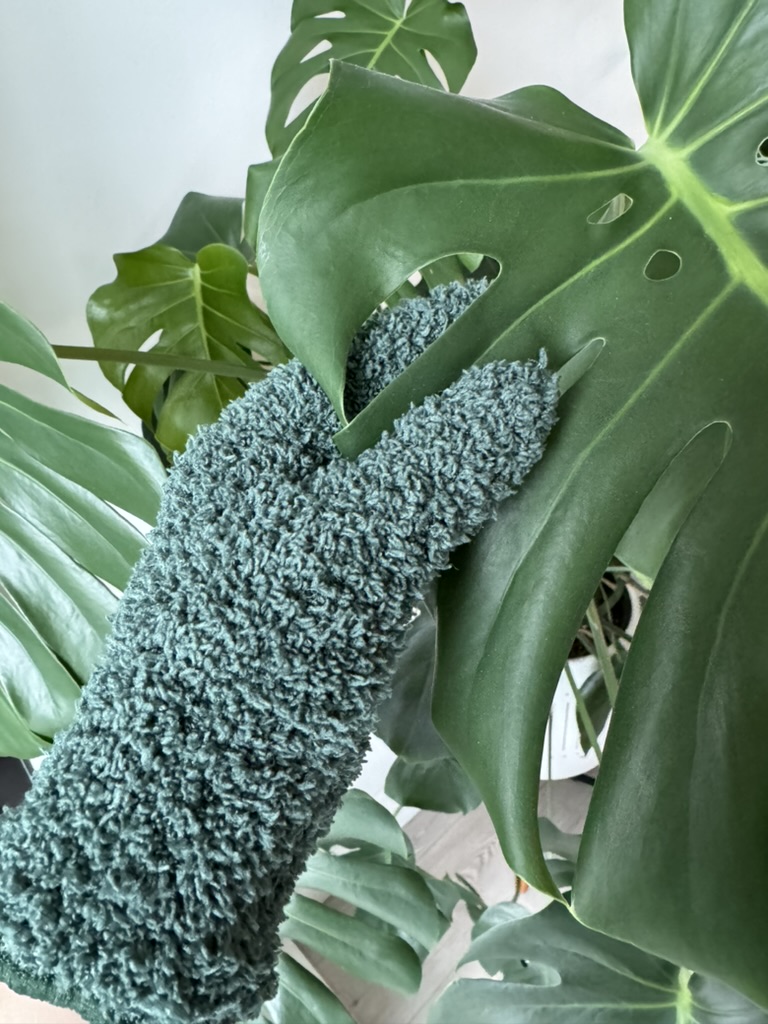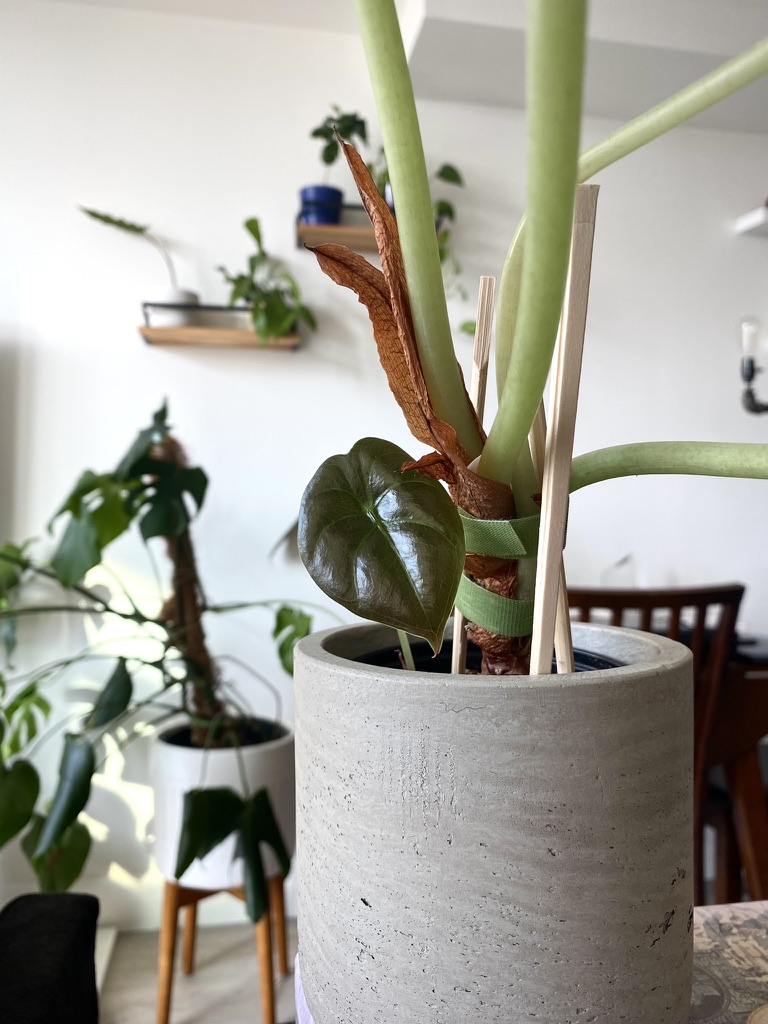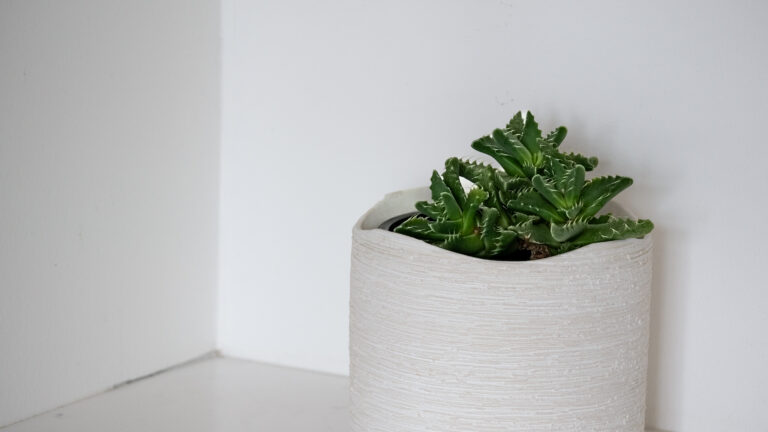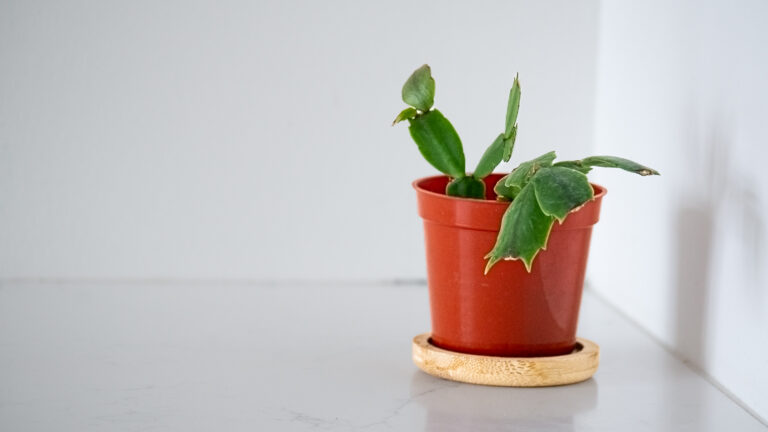Reverse Spider Plant or Chlorophytum Comosum ‘Reverse Variegatum’ is a member of the asparagaceae family. It is a cultivar of the Spider Plant which is native to South Africa.
Chlorophytum Comosum ‘Reverse Variegatum’ is referred to as the Reverse Spider Plant because the foliage colours are reversed from the standard Spider Plant.
The Chlorophytum Comosum is called the Spider Plant because the plant resembles a spider. It also grows little plantlets that dangle off of the plant itself, like a spider floating on a web.
There are around 2900 species of the asparagaceae family, and 200 species in the Chlorophytum genus.
🪴 Appearance of Reverse Spider Plant
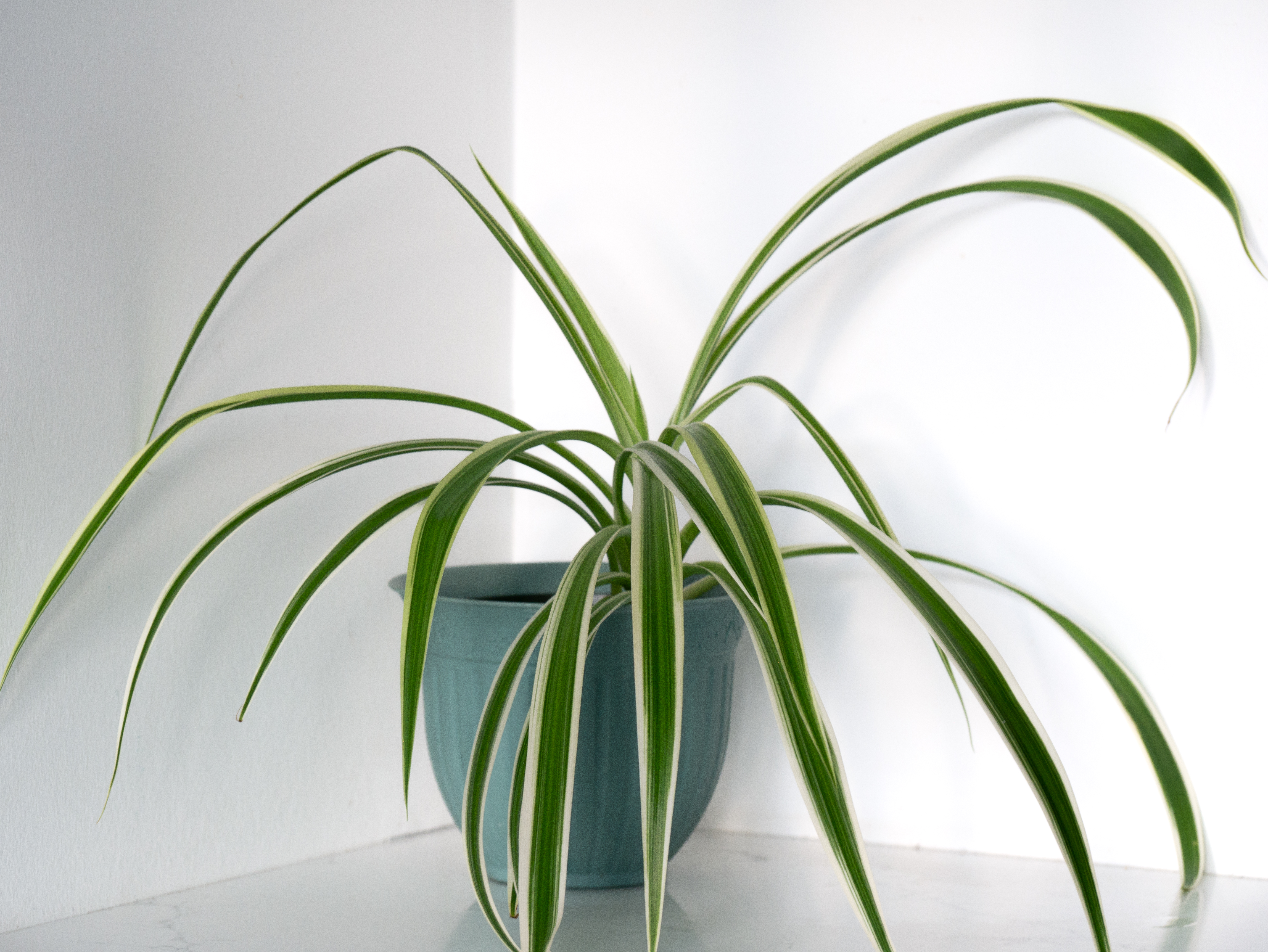
The Reverse Spider Plant has green foliage with a white border that erupts from the center of the plant.
This plant is quite voluminous, and you will often find it with its pups dangling off of it. These grow off out of the flowers that will grow out of the plant.
This looks the coolest in a hanging planter.
☀️ Light Needs
Spider Plants thrives in indirect, medium-bright light, but they will be okay in medium-low light. They prefer direct sun in the early morning or late afternoon with indirect light for the rest of the day.
I have kept my Spider Plant in the middle of a room with a southwest facing window, but it will still thrive in a room with north or east facing light. You just have to move it closer to the window in that case.
🌡️ Temperature & Humidity 🌫️
Spider Plants prefers a temperature between 18-24 degrees celsius degrees celsius (65-75 degrees Fahrenheit).
They are fine with any humidity level, but prefer average household humidity levels (40-60%). I keep my Spider Plant near my Levoit Hybrid Ultrasonic Humidifier (LV600HH).
Since I live in Canada, the winters can be very dry, and the humidity can drop below 30% humidity so a humidifier is essential. I keep my humidifier set at about 45% or 50% to keep my plants happy.
🌱 How Does the Spider Plant Grow?
On average, Spider Plants can grow up to 2 feet tall. As a hanging plant, the leaves can grow 18 inches long.
New foliage grows upwards from a central stem before eventually growing long enough that it starts to curl downwards.

🌸 Does the Spider Plant Bloom?
The Spider Plant does bloom. It produces long, branches with an inflorescence on the end that eventually opens to a white flower.
✂️ How to Propagate Spider Plant?
The easiest way to start a new Spider Plant is by removing its plantlets (also known as spiderettes, offsets or pups).
After one year of life, Chlorophytum Comosum can produce little plantlets. These will appear off of a branch that grows out from the center of the plant.
Make sure the plantlets are at least 2 to 3 inches tall before separating them from the mother plant to give them the best chance of success.
Gently remove the plantlet from the parent plant and either place the cutting in water or soil propagation depending on your propagation preference.
Water Propagation
Place the Spider Plant plantlet in a jar of distilled or you can use filtered water if you let it sit out for 24 hours. Spider Plants are particular about their water and their tips will start to brown.
If the water starts to get murky, you will want to change out the water and put the plant back in. Otherwise it will potentially rot the stem and the plant won’t root.
I like water propagation because I can see when the roots start to form in a clear glass container. When the roots are stable enough (at least 2-3″), I then plant it in soil.
Soil Propagation
With soil propagation, you can take the plantlet and put it directly in soil. You won’t be able to see if the plant is rooting in the soil, but if the plant eventually dies, you know it didn’t root successfully.
Some people have more success with soil propagation as you don’t have to worry about transplant shock when moving the plantlet from water to soil.
Patience is key with propagation. Give your new plant some time to settle into its environment. Once you see new growth, you know your plant is well established. Alternatively, if it turns fully yellow you know your plant didn’t survive :(.
💧 How Much Water Does the Spider Plant Need?
The Spider Plant likes to mostly dry out between waterings (likely about once a week). Make sure you only use distilled water or filtered water that has been sitting out for 24 hrs as the Spider Plant is prone to brown tips if you use tap water.
To determine if your plant needs water, you can stick your finger in the soil (1 to 2 inches) and if it is dry, its ready for water! If you don’t want to get your hands dirty, you can try a moisture meter.
I typically bottom water my Chlorophytum Comosum through the drainage hole of the pot on a tray. It’s the easiest way to know if your plant is thirsty or not. Overwatering can lead to fungus gnats, root rot, or the death of your plant.
You can top water your Chlorophytum Comosum, but it’s best to do so in a pot with drainage, until water is flowing out of the hole. If your pot doesn’t have drainage, you might accidentally drown your plant or make some fungus gnats very happy.
You should top water from time to time to make sure any built up minerals can wash through the plant. The water should drip out of the bottom of your drainage hole.
🪳 Pests & Problems 😔
Spider Plants can face the following pests and problems.
🪳 Pests
Mealy Bugs
These look like little white cotton balls on Chlorophytum Comosum. You can remove these with your fingers if you catch them early enough, regardless I would use a cotton swab with a drop of Isopropyl alcohol and try to scrape them off the stem.
Scale
Scale are small, brownish, round or oval insects that attach themselves to the leaves or stems of the Spider Plant. They are hard to notice as they appear like a growth or bump. Scale can cause yellowing, wilting, and weakened growth. Removing scale from a plant is tedious. You can remove scale with a cotton swab with isopropyl alcohol, by using insecticidal soap or neem oil.
Aphids
Aphids are small, insects that cluster under leaves and stems. They can appear white, brown, black, gray, light green or yellow. If you see distortion, wilting or yellowing leaves, this can be a sign of aphids. You should be able to spray them off your Spider Plant with a strong stream of water or using insecticidal soap.
Spider Mites
If spider mites have taken to your plant, spray them with a mixture of neem oil, dish soap and water (or you can buy an insecticidal soap). I repeat this about once or twice a week (depending on the severity of infestation) for about a month. It’s also good to do this preventatively once a month or so. You will know you have spider mites if you see webbing and leaf damage. Learn how to eradicate Spider Mites.
Thrips
These are little, dark bugs that look like dirt on Chlorophytum Comosum. They suck the life out of the leaves, and lay eggs within the tissue of the leaf. As they age, they can grow wings and infect other plants. I spray the Spider Plant with a mixture of neem oil, dish soap and water. I repeat this every few days to try and get both the pest and the eggs. Sometimes I just chop the affected leaf since they are hard to eradicate. You can find thrips close to where the leaf connects to the center of the plant. Complete guide on how to get rid of thrips.
Fungus Gnats
Spray the Spider plant with a mixture of neem oil, dish soap and water. I also let the soil dry out and add dryer sheets on top of the soil so the gnats can’t sense the moisture on the soil.
😔 Other Common Problems
- Brown, crispy tips: If you are using tap water to water your Spider Plant, this is likely the culprit. Switch your water to distilled water, or use room temperature filtered water, or rain water that has been sitting out for 24 hours. If you don’t let the water sit out for 24 hours, it can be harsh to the Chlorophytum Comosum like tap water is. While this won’t reverse the tips that have crisped, it will prevent future crispy tips.
- Drooping Leaves: Your Spider Plant is likely thirsty. Just give it a little water and it should be as good as new.
- Yellowing Leaves: This is likely an overwatering issue. Cut back on how much you are watering your Spider Plant.
- Overwatering: Root rot happens from overwatering your plant with insufficient drainage. You can improve the drainage of your plant by ensuring your plant is potted in a planter with a drainage hole and using a well draining soil (something with a decent amount of perlite). You can also end up with fungus gnats or fungal disease from overwatering.
- Underwatering: Even though plants prefer to be underwatered over overwatered, you still have to remember to water it on a consistent schedule. Signs of underwatering an include leaves becoming shrivelled, discoloured or dry.
- Sunburn: If you see brown patches, or the texture is crispy, your Spider Plant may have too much sun. Move it to somewhere in your house with bright, indirect light.
- Cold temperatures: Damage from cold temperatures can lead to slow growth of your Spider Plant. It can also lead to vulnerability to disease, visible discolouration, or death. You can prevent this by making sure your Chlorophytum Comosum is not exposed to environments below the recommended temperatures.
☢️ Toxic?
Spider Plants are typically not toxic to touch or consume, however some people may experience allergic reactions.
Spider Plant Quick Care Guide
| Scientific Name | Chlorophytum Comosum ‘Reverse Variegatum’ |
| Nickname | Spider Plant, Reverse Variegated Spider Plant, Spider Plant Reverse, Airplane Plant, Hen and Chickens |
| Origins | South Africa |
| Light | Indirect, medium-low light |
| Temperature | 18-24 degrees celsius degrees celsius (preferred) |
| Humidity | Average humidity (40-60%) |
| Height | Up to 2 feet |
| Blooms | Yes |
| Propagate | Offshoots |
| Water Frequency | When mostly dry (likely once a week) |
| Pests | Mealy Bugs, Aphids, Scale, Spider Mites, Thrips |
| Common Problems | Brown crispy tips, Overwatering (root rot), underwatering, sunburn, cold temperatures, drooping leaves, yellowing leaves |
| Toxicity | Non-toxic |
References
Below is a list of external sources I consulted while writing this post. This post is a mixture of my own experiences, and the external sources listed below:
Jomo Studio – Spider Plant Reverse
NCSU Plant Toolbox – Chlorphytum Comosum
Wikipedia – Chlorophytum & Chlorophytum Comosum
Happy Houseplants – Spider Plant Care
Lively Root – Spider Plant Propagation
Greg App – Variegated Spider Plant Bugs & Problems

